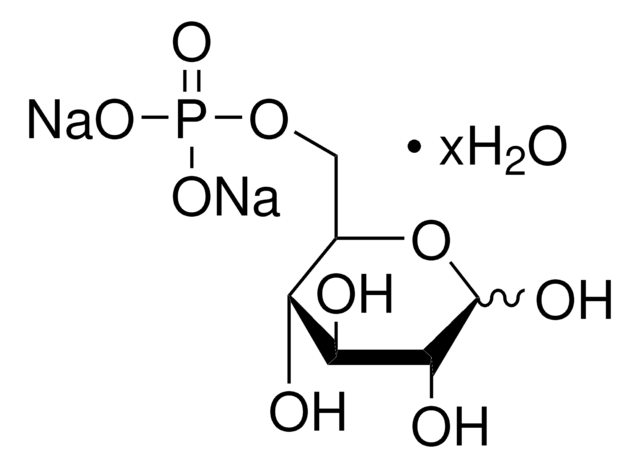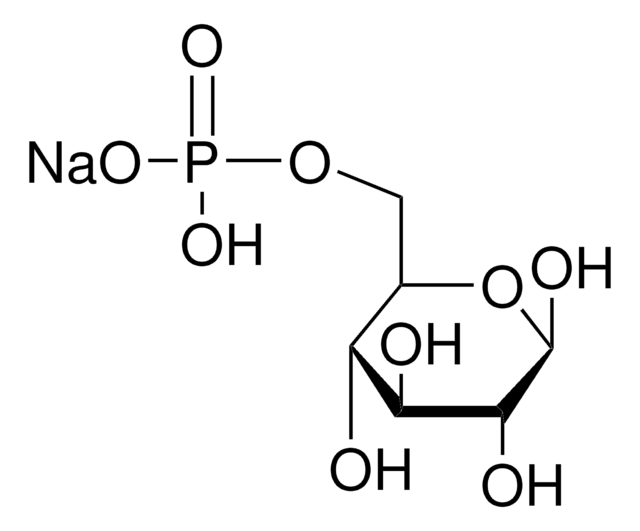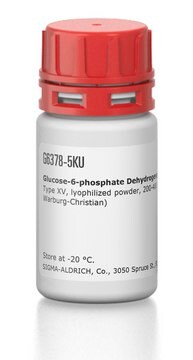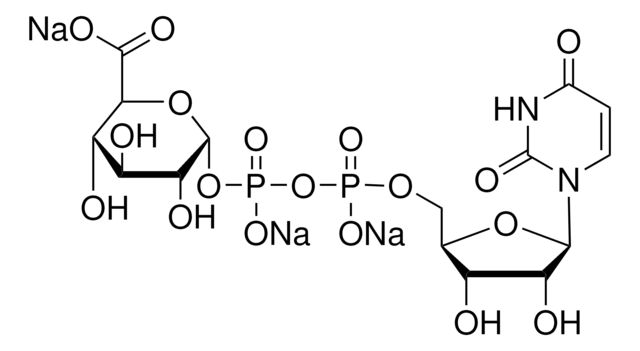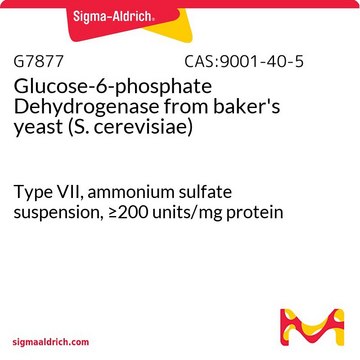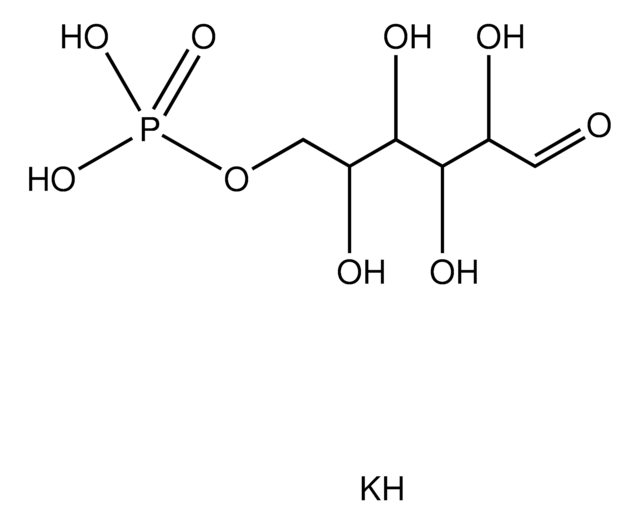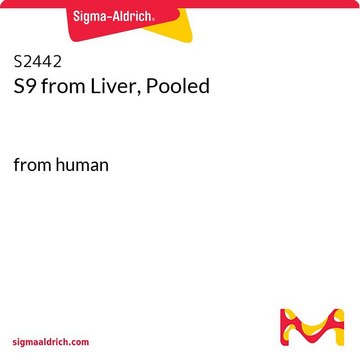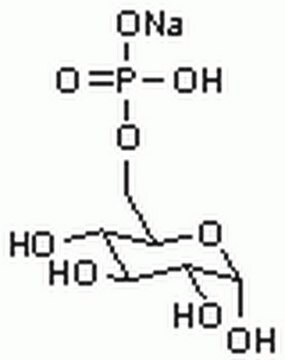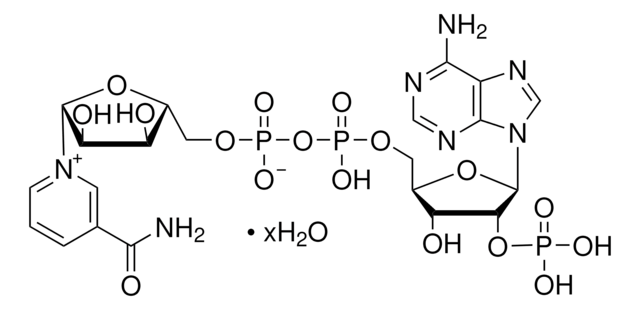G7772
D-Glucose 6-phosphate solution
~1 M in H2O (approx. 260 mg per ml)
Synonym(s):
D(+)-Glucopyranose 6-phosphate, Robison ester
About This Item
Recommended Products
biological source
synthetic (inorganic)
Quality Level
assay
≥99% (TLC)
form
liquid
concentration
~1 M in H2O (approx. 260 mg per ml)
technique(s)
thin layer chromatography (TLC): suitable
color
colorless
shipped in
dry ice
storage temp.
−20°C
SMILES string
OC(COP(O)(O)=O)C(O)C(O)C(O)C=O
InChI
1S/C6H13O9P/c7-1-3(8)5(10)6(11)4(9)2-15-16(12,13)14/h1,3-6,8-11H,2H2,(H2,12,13,14)
InChI key
VFRROHXSMXFLSN-UHFFFAOYSA-N
Looking for similar products? Visit Product Comparison Guide
Application
- Phosphonate and α-fluorophosphonate analogs of d-glucose 6-phosphate as active-site probes of 1l-myo-inositol 1-phosphate synthase.: This study explores phosphonate and α-fluorophosphonate analogs of d-glucose 6-phosphate, offering insights into their use as probes for understanding enzyme mechanisms, which could impact biochemical research methodologies (Ramos-Figueroa et al., 2023).
Biochem/physiol Actions
Linkage
Other Notes
signalword
Danger
hcodes
Hazard Classifications
Skin Corr. 1B
Storage Class
8A - Combustible corrosive hazardous materials
wgk_germany
WGK 3
flash_point_f
Not applicable
flash_point_c
Not applicable
ppe
Eyeshields, Faceshields, Gloves, type P3 (EN 143) respirator cartridges
Choose from one of the most recent versions:
Already Own This Product?
Find documentation for the products that you have recently purchased in the Document Library.
Customers Also Viewed
Our team of scientists has experience in all areas of research including Life Science, Material Science, Chemical Synthesis, Chromatography, Analytical and many others.
Contact Technical Service